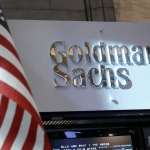On 25th March, the Vanguard US real estate index fund $VNQ hit $60. The last time it was at this level was in September 2008, right at the beginning of the Great Recession.
The fact of the matter is, real estate has been performing even worse than the S&P, which is highly unusual, considering that historically REITs have always offered better downside protection than other equities.
Why is that happening?

Following the quarantine measures imposed due to the COVID-19 pandemic, a lot of businesses have to temporarily cease operations. Almost every company, from corporations to small businesses, is or will be impacted. This sudden slump in economic activity is incredibly dangerous; the cash flow chain is disrupted, leaving companies with no cash to cover employee salaries, mortgage payments, and rent payments. Naturally, when businesses start defaulting, a liquidity crisis is to be expected. For example, if tenants start postponing rent payments, it’s the REIT companies that bear the losses.
Considering that most REITs are using leverage, that poses a threat to the banks too. The difference from 2008 to now is that a much bigger part of the US real estate market is financed by small mortgage originators that operate as REITs, which originates from the aftermath of the last crisis and the strict regulations imposed on big banks.
Pricing in those risks, investors have punished the real estate sector harshly. But are they right in doing so?
Data shows that real estate companies have learned their lesson from the 2008 crisis. Following years of strong performance, REITs have reduced their debt levels substantially and now their balance sheets look healthier than ever; they are certainly in a position to weather the storm.
According to data from NAREIT, REITs are currently sitting on $28 billion of cash and $120 billion of untapped credit lines. The weighted average ratio of cash and credit lines to interest expense is 10, meaning that currently, REITs hold 10 times the amount in cash and available credit to cover their interest payments. On top of that, managers are starting to show increasing confidence by buying up their companies’ stock. Herbert Simon (Chairman, Simon Property Group $SPG) bought a total of 188,572 shares, or the equivalent of $9.9 million and Peter Carlino (CEO, Gaming and Leisure Properties $GLPI) purchased 80,000 shares for the price of $2 million. Arbor Realty Trust $ABR announced a $100 million share buyback program, which at the current market cap represents 10% of the total float.
So why has every other REIT dropped by 50–60% in the past few weeks then, when rationally, this shouldn’t be the case? The COVID-19 crisis is real and it shouldn’t be underestimated. The danger for people’s health and the danger for the economy is significant. However, we shouldn’t suddenly forget how to value solid fundamentals. Real estate companies derive their revenue from long-term leases, and that’s how rational investors should value REIT companies — based on their potential for future cash flow generation. And by future, we mean years - not a few months. There’s a high chance that real estate prices will drop and many companies will release disappointing results for 2020, but that shouldn’t have a huge impact on their valuation, considering the long-term nature of their assets. Regardless of the struggles we may experience in the next few quarters, the demand for housing won’t suddenly disappear. The demand for hospitals is certainly here to stay. The demand for offices, industrial buildings, hotels and experiential properties has only been increasing over the past decades, and to think that this demand will disappear means that we believe that this recession will last for decades — which when we look at the past is highly unlikely.

In this market of panic and scary headlines, it’s more important than ever to look at the facts and ignore the noise. We are undoubtedly faced with risks and uncertainty connected to COVID-19, however, the panic in the commercial real estate market is overblown. Currently, due to its solid fundamentals and a high possibility for recovery, this stands as one of the safest sectors. As the Persian saying goes “This too shall pass”, and the chance that the prices we’re seeing now will look like a steal in a few years is too high.













